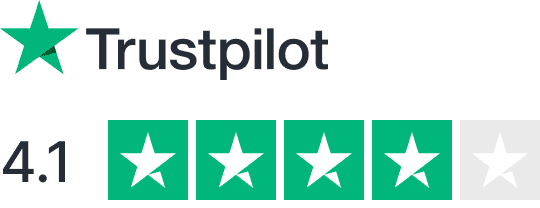Want to retain top LATAM talent? Start tracking retention metrics.
Retention metrics help you cut costs, build stable teams, and improve work environments. But managing LATAM-based teams comes with challenges like time zone differences, competitive markets, and remote work dynamics.
Here’s what you’ll learn:
- Key metrics like turnover rate, employee NPS, and retention rate
- How to set up retention tracking systems
- Actionable strategies to improve retention
- Tools like CareMinds to simplify the process
Tracking and using these metrics effectively can lead to stronger, more engaged teams and long-term success. Let’s dive in.
Employee Engagement Metrics: How do you track success?
Main Retention Metrics
Tracking the right metrics is key to maintaining a strong and engaged LATAM talent base. Below are some important metrics that can help you understand and improve retention efforts.
Calculating Turnover Rate
Turnover rate shows the percentage of employees leaving your organization over a specific period.
Formula:
Turnover Rate = (Separations / Average Employees) × 100
For instance, if you employ 100 LATAM developers and 5 leave in a quarter, your quarterly turnover rate is 5%. To maintain stability and manage costs, many organizations aim for an annual turnover rate under 10%.
Understanding Employee NPS
Employee Net Promoter Score (eNPS) is a simple way to gauge employee satisfaction and loyalty. It’s based on one question: "On a scale of 0-10, how likely are you to recommend working here to a friend or colleague?" Responses are grouped as follows:
- Promoters (9-10): Highly satisfied employees
- Passives (7-8): Satisfied but not enthusiastic
- Detractors (0-6): Dissatisfied employees
To calculate eNPS, subtract the percentage of detractors from the percentage of promoters. A positive score indicates good satisfaction levels, while scores above +30 are considered strong.
Measuring Retention Rate
Retention rate highlights how well you’re keeping your employees. Use this formula:
Retention Rate = ((Number of employees at end – New hires during period) / Number of employees at start) × 100
This metric provides a clear view of workforce stability over a given period.
Time to Full Performance
Time to Full Performance measures how quickly new LATAM hires reach their peak productivity. Factors like technical know-how, team dynamics, project clarity, and communication all play a role. For example, CareMinds’ rigorous selection process, with a 1% acceptance rate, helps ensure new hires ramp up quickly. This metric underscores the importance of a solid onboarding process in driving retention success.
sbb-itb-a3fbb4e
Setting Up Retention Tracking
After identifying key metrics, the next step is creating an effective tracking system to monitor and improve retention.
Selecting Your Metrics
Choose metrics that align with your specific goals. Some key KPIs to consider include:
- Turnover by department
- Time-to-full performance
- eNPS trends
- Project completion rates
- Team satisfaction levels
For technical roles, you might also track metrics like code quality scores or sprint velocity to assess engagement and satisfaction. Once you’ve selected your metrics, gather the necessary data to begin monitoring.
Gathering and Using Data
To track these metrics effectively, collect data from a variety of sources:
Primary Data Sources:
- Performance reviews
- Project management tools
- Time tracking systems
- Employee feedback surveys
- Exit interviews
Automating data collection where possible can save time and ensure consistency. Many companies working with LATAM teams use quarterly review cycles, which provide enough time to identify trends while maintaining regular oversight.
Best Practices for Data Analysis:
- Review metrics monthly to catch potential issues early.
- Compare data across different LATAM regions to identify regional patterns.
- Keep an eye on seasonal performance trends.
- Document any external factors that might influence metrics.
These insights can help you uncover underlying issues and take informed action.
Acting on Metric Results
Turn the data into actionable steps by following a structured approach:
- Pinpoint the root causes of any anomalies.
- Create detailed, measurable plans to address the issues.
- Track progress through regular reviews.
For instance, if time-to-full performance is longer than expected, examine areas like onboarding processes, communication methods, or team integration. Focus on improving these areas by leveraging expertise and proven strategies. Regularly review the impact of these changes, and maintain open communication to ensure everyone understands the goals and expectations.
Retention Success Strategies
Improving the Work Environment
Creating a workplace that employees enjoy is key to keeping LATAM talent engaged. Regular video meetings, effective collaboration tools, and communication channels that respect varying time zones help build stronger team connections. Cross-cultural training can also help bridge communication gaps and foster better understanding among team members.
Pay and Benefits Planning
Offering competitive pay is essential to attract and retain top talent. For instance, skilled developers earning base rates of $31/hour ensures alignment with the market while remaining cost-effective.
CareMinds Retention Tools

Beyond workplace improvements and competitive pay, targeted tools can further strengthen retention efforts. CareMinds offers solutions designed to maintain strong relationships with LATAM talent:
- Thorough Vetting: Rigorous evaluations ensure candidates have the right technical skills and align culturally, reducing the risk of early turnover.
- Trial Period: A two-week trial period allows teams to assess fit before making long-term commitments, lowering hiring risks.
- Path to Full-Time Roles: A buyout option after one year provides a seamless transition for contractors to become full-time team members, boosting integration and loyalty.
| Retention Tool | Purpose | Impact |
|---|---|---|
| HR Support | Handles daily administrative tasks | Reduces friction for the team |
| Trial Period | Validates team compatibility | Lowers chances of early exits |
| Buyout Option | Provides a clear path to permanence | Improves long-term retention |
These strategies work together to address the specific challenges of managing LATAM talent, helping to build strong, lasting, and high-performing teams.
Closing: Making Metrics Work
Let’s pull everything together and focus on actionable steps to improve retention using the strategies we’ve discussed.
Key Takeaways
Tracking retention metrics systematically is the foundation for ongoing progress. Here’s a breakdown of the essential components:
| Metric Component | Why It Matters | How to Use It |
|---|---|---|
| Regular Monitoring | Helps you spot trends and patterns early | Review metrics on a weekly or monthly basis |
| Data Analysis | Pinpoints areas that need attention | Compare results against benchmarks to find gaps |
| Action Planning | Turns insights into solutions | Develop targeted strategies to address specific issues |
By combining these elements, you can build stronger connections with LATAM talent while making measurable improvements in retention. A structured tracking process can lead to better employee engagement and long-term retention gains.
First Steps to Take
Here’s how to get started right away:
- Focus on tracking metrics like turnover rate and employee Net Promoter Score (NPS).
- Establish benchmarks to measure progress.
- Set up a monthly review schedule to stay on top of trends.
Taking these steps will help you turn raw data into real progress for your team.
A data-driven approach to retention tracking can lead to more stable teams and better overall performance. When you pair insights with targeted actions, it creates lasting improvements for your organization.
If you’re looking for expert help, consider services like CareMinds (https://mediumseagreen-lemur-727032.hostingersite.com). They simplify the process with pre-vetted talent from LATAM and the EU, saving you time and effort while helping you implement effective retention strategies.
















